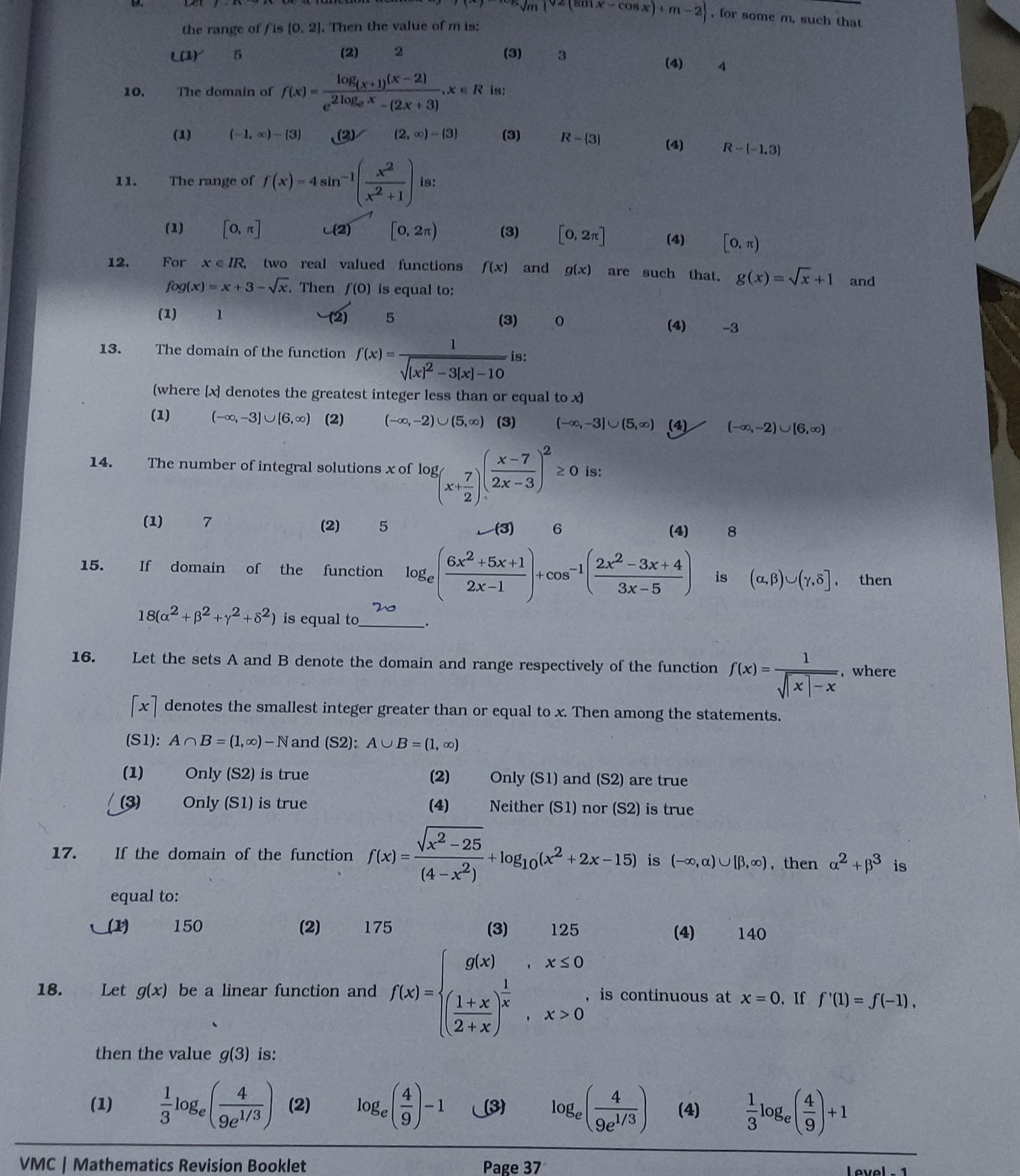Question
Question: Let $f:R\rightarrow R$ be a function defined by $f(x)=log_{\sqrt{m}}(\sqrt{2}(sinx-cosx)+m-2)$, for ...
Let f:R→R be a function defined by f(x)=logm(2(sinx−cosx)+m−2), for some m, such that the range of f is [0, 2]. Then the value of m is:

A
5
B
2
C
3
D
4
Answer
5
Explanation
Solution
The argument of the logarithm is A(x)=2(sinx−cosx)+m−2. The range of 2(sinx−cosx) is [−2,2]. Thus, the range of A(x) is [m−4,m]. For f(x) to be defined, the base m>0,=1 and the argument A(x)>0. The condition m−4>0⟹m>4 ensures these. Since m>4, m>1, so logm is increasing. The range of f(x) is [logm(m−4),logm(m)]. Given range is [0,2]. Equating minimums: logm(m−4)=0⟹m−4=1⟹m=5. Verifying with maximums: log5(5)=2, which is correct.
